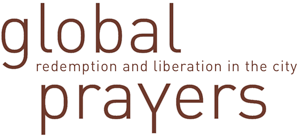A Case Study of Nigeria’s Lagos-Ibadan Expressway
The ethnographic field research conducted by anthropologist Marloes Janson in Nigeria’s former capital Lagos explored how city and religion mutually influence and constitute each other by investigating the extent to which the Lagos-Ibadan Expressway has produced new forms of religiosity and how these have inscribed themselves in urban space. Resulting from the fact that this 120-kilometre long highway that connects Nigeria’s economic hub Lagos with the city of Ibadan – the third largest metropolitan area in the country – is one of the most accident-prone highways in Nigeria, a popular label for the Lagos-Ibadan Expressway is ‘Highway of Death’. Since the 1980s, Christian and Muslim movements have begun constructing ‘prayer camps’ (cf. the research conducted for the Global Prayers project conducted by Asonzeh Ukah) along the highway to accommodate their tens of thousands of worshippers, thereby converting it into what can be called a ‘Spiritual Highway’.
Two factors seem to be responsible for the religious revival along the Lagos-Ibadan Expressway. First, the late 1980s were a historic moment for Nigeria, marked by the implementation of Structural Adjustment Programmes and neo-liberal reforms. These developments resulted in the privatization of the Nigerian state and deregulation of the market. The gradual withdrawal of the state from the economy generated a new public sphere evolving around private enterprises, including religious organizations. Since then, Christian and Muslim movements have set out to deliver their services as a substitute for earlier state policies. These movements provide not only massive religious services such as ‘prayer crusades’ and ‘night vigils’, but also run their own schools, universities, health centres, and companies offering business ventures and employment. Second, land is scarce in the urban centres of Lagos and Ibadan. Land is more affordable along the highway, composed largely of uncultivated rain forest, and this is the reason why Christian and Muslim movements in search for prayer camps to accommodate their ever increasing numbers of worshippers have bought land here, converting the secular space of the highway into divine space.
Janson’s research compared two rapidly growing prayers camps along the Lagos-Ibadan Expressway: Mountain of Fire and Miracle Ministries (MFM) on the Christian side and Nasr Allah al-Fatih Society of Nigeria (NASFAT) on the Muslim side. Over the past decades, Pentecostalism has drawn many Nigerian Christians from the mainline churches and also many Nigerian Muslims promising them spiritual rebirth. The growing ‘Pentecostalisation’ of Nigerian society has played a central role in the increasing political cleavage and violence along religious lines. A paradox in the current religious situation in Lagos is, however, that while Pentecostal Christianity and reformist Islam compete to win souls and public presence, the very fact of competition has led the two religious traditions to borrow from one another. NASFAT’s construction of its own prayer camp along the Lagos-Ibadan Expressway is a case in point: copying MFM’s Prayer City, NASFAT’s prayer camp is being projected as a model city for Muslims.
Challenging conventional assumptions of Christian-Muslim interactions in Nigeria, Janson’s research focused instead on the convergence between the two religious traditions, thereby crossing boundaries and blurring sharp distinctions. By mapping the similarities between MFM and NASFAT, it emerged that the convergence of Pentecostalism and reformist Islam in the ways religion articulates with urbanity and interpretations of modernity makes the Lagos-Ibadan Expressway a true crossroads. At this crossroads prayer camps act as road-builders in rendering meaningful the unstable flux of life in a megacity like Lagos.
